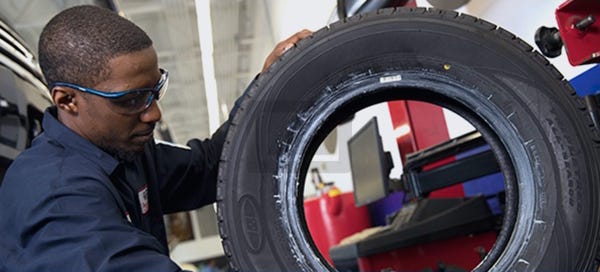Morris Tires: Your Location for GMC Tires Service Excellence
Tire Service: The Influence of Climate Condition
When it comes to making sure optimum performance and safety when traveling, understanding the influence of climate condition on tire service is critical. From scorching warmth to icy roads, each climate component can substantially influence tire functionality and overall driving experience. By diving into the impacts of differing weather on tires, drivers can gain useful insights that may improve their automobile's performance and durability. In this discussion, we will certainly discover the intricate relationship in between weather and tire solution, dropping light on the relevance of weather-specific tire upkeep practices and considerations.
Heat and Tire Efficiency
When exposed to heats, tires experience modifications in efficiency that can substantially impact automobile security and handling. The warm created from long term driving or warm weather condition conditions causes the tire rubber to soften, bring about minimized step life and increased wear. As the rubber becomes softer, the tire's grip when traveling lessens, influencing braking ranges and general grip. In severe instances, too much warm can also create tire blowouts, posing a serious security risk to the automobile and its passengers.

Cold Climate Impacts
Cold weather conditions can have a significant influence on tire efficiency and safety and security. In cool weather, tires may additionally lose air pressure more swiftly, which can impact managing and gas performance.
To reduce the results of winter on tires, it is crucial to consistently check tire pressure and inflate them to the producer's suggested degrees. Utilizing wintertime or all-season tires developed for winter conditions can likewise improve grip and grip on icy or snowy roads. Appropriate tire maintenance, including regular inspections for wear and damages, becomes much more crucial during colder months to make certain optimum efficiency and safety and security.
Rainy Issues Influence
Throughout rainy conditions, tire performance and safety can be dramatically affected by the wet road surfaces and minimized visibility. The tread pattern of tires plays an important duty in maintaining traction on damp roadways. Tires with damaged treads are more vulnerable to hydroplaning, where a layer of water accumulates in between the tire and the roadway surface area, resulting in loss of traction. To combat this, motorists must on a regular basis check their tires for adequate tread deepness and take into consideration investing in tires especially made for wet problems.
Moreover, stormy climate can additionally reduce visibility, making it testing for vehicle drivers to see the roadway ahead clearly (GMC Tire Service). In such conditions, it is crucial to change driving speeds accordingly and keep a risk-free following distance to enable for abrupt stops. Effectively inflated tires can additionally assist in maintaining control on wet roads by offering much better handling and grasp
Snow and Tire Safety And Security
When driving in read what he said snowy conditions, having the appropriate tires can make a considerable difference in safety and security and performance. Winter tires are made with special rubber compounds and tread patterns to provide better grip on snow and ice compared to all-season tires.

It is important to follow supplier directions when mounting and using tire chains to protect against damage to the tires and vehicle. By choosing the best tires, preserving correct rising cost of living, and taking into consideration extra traction help like tire chains, vehicle drivers can enhance their safety when browsing snow-covered roadways.
Weather-Related Tire Maintenance
When confronted with numerous climate conditions, appropriate tire maintenance ends up being an important facet of automobile safety and security and performance. Weather-related tire maintenance includes a range of methods targeted at guaranteeing ideal tire feature and durability in different weather situations. One vital element of weather-related tire upkeep is tire stress policy. Rising and fall temperatures can trigger tire pressure to vary, impacting traction and useful source gas effectiveness. Regularly examining and changing tire stress according to producer referrals is vital for secure driving in changing weather problems. Additionally, tire tread depth plays a substantial role in taking care of various weather condition aspects. Tires with appropriate step deepness offer better hold on damp or icy roads, reducing the threat of hydroplaning or skidding. Checking tire walk routinely and changing tires when walk wear gets to a certain deepness is crucial for preserving grip and stability in adverse weather. By prioritizing weather-related tire maintenance, motorists can enhance safety and security, boost vehicle efficiency, and extend the lifespan of their tires.
Conclusion
In verdict, weather condition problems have a substantial influence on tire efficiency and safety. From heat affecting tire stress and wear to cold weather minimizing traction, it is necessary to think about the weather when preserving and using tires.
In this discussion, we will check out the complex relationship in between climate problems and tire solution, shedding light on the relevance of weather-specific tire upkeep methods and considerations.
